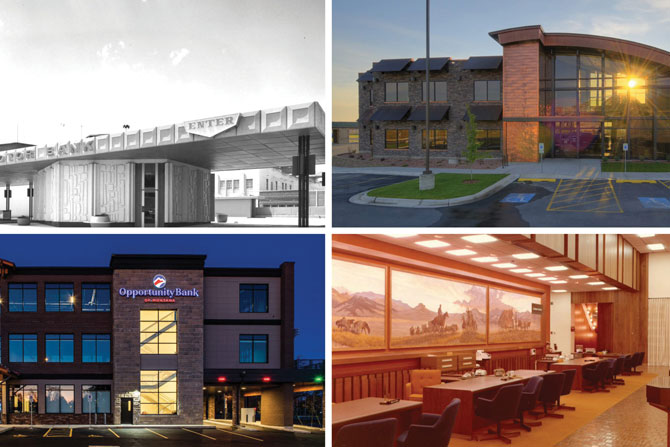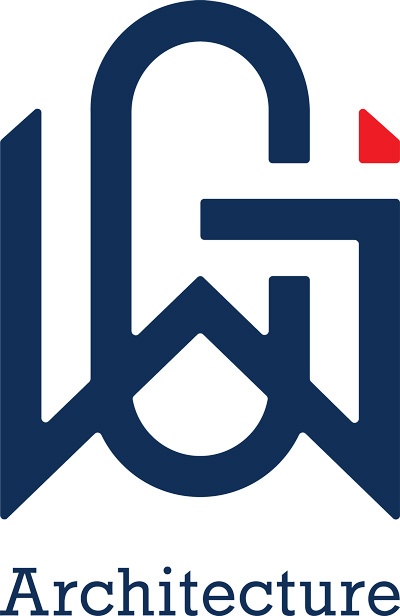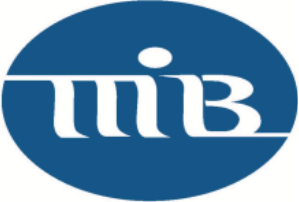In our 64 years of providing Architecture and Design services throughout Montana, CWG Architecture & Interiors has seen the full evolution of banking facilities. Whether it was a lavish lobby with a long teller line, the advent of drive-thru banking, or facilitating virtual banking, we have helped clients adapt to the changing needs of the industry. While banking and construction have evolved at a blistering pace over the last six decades, at least one item has remained consistent. A successful project starts with a cohesive team.
As architects, one of our main roles is to build a project team and facilitate working together to achieve a successful outcome. At CWG, we are there to be an advocate for the project owner. As an advocate, we must mitigate issues before they arise and help correct unforeseen problems. We believe the best way to do this is by having the project team involved in the earliest phases of the design process. The construction industry is a complex sector that involves many players at various stages. The stakeholders typically include the Owner, Contractor, Architect, Interior Designer, Engineer, and any other specialized consultants necessary to meet the owner’s needs.
Traditionally, construction is considered a fragmented industry with separation between the design and construction phase, commonly referred to as the design-bid-build process. In this process, the Owner typically engages an Architect to develop the design and construction documents, then the project is competitively bid and awarded to the Contractor with the lowest cost. This lack of continuity between designers and contractors often results in inefficiencies during the construction phase, such as design changes, increasing costs, and longer construction duration.
At CWG, we believe that using the unique skills and expertise of all project partners is the best way to overcome obstacles and keep a project on track. When team integration and communication are prioritized, it allows everyone to incorporate their knowledge and influence design decisions before construction documents are finalized. Thus, saving the owner time and money as the project moves into the construction phase.
As the actual builder of the facility, the Contractor is an essential part of the project team. To ensure that the design is as cost and time-efficient as possible, it is crucial to have the Contractor involved in the preliminary design phase. Contractors will assist in providing initial construction budgets, schedules, material lead times, and value engineering options. Construction sequencing and phasing are critical in delivering a completed project on schedule, and the Contractor is the expert on this subject. Having early access to a Contractor’s diverse skills and expertise helps the project team meet the complex needs of banking facilities.
Benefits of Early Collaboration
- The Owner’s needs and goals are defined and understood by all members of the project team
- Establishes initial design and construction schedule to help avoid delays
- Contractor can estimate the construction budget in the preliminary design phase and provide value engineering alternatives
- Design strategies are synchronized to maximize construction efficiencies
- Project Team coordinates with subcontractors and suppliers during design to specify materials that avoid supply chain delays
- Incorporates bank equipment and furniture in the building design to improve functionality of the space
- Minimizes contractor’s bid phase schedule
- Utilizes a diverse knowledge pool for overall improvement of project performance
- Minimizes disputes and disagreements between the Architecture/Engineering team and Contractor, resulting in fewer change orders during construction
- Initiates State, City, or subdivision review processes as early as possible to avoid delays
One misconception about the traditional design-bid-build contracting practice is that having the design and construction teams function as two separate entities will raise the quality of the work. In our experience working as a cohesive project team, we have seen the increased quality and a more client-focused, efficient project delivery.
The first step toward creating a trusted project team is thinking of the design and construction process as a united approach, rather than a linear system where the goal is to simply design a building at the lowest bid. Banks who frequently complete facility remodels and construction projects likely already have a team in place and can begin facilitating early collaboration within this group. Owners who do not have a team in place can start by asking industry peers for references or check with Contractors, Architects, or Engineers who are existing bank customers. Whichever path is chosen when creating a project team, consider the experience of the team members. Each project is a learning experience, and the more projects your team has completed, the more knowledge they have to offer. The integrated design team process helps put the Owner’s mind at ease, knowing there is an entire team solving problems and working toward a common goal. The process is incredibly fun and rewarding as the project progresses and finally opens for business.
Want to learn more about working with a collaborative project team? Contact CWG Architecture & Interiors at cwg-architects.com for more information.











